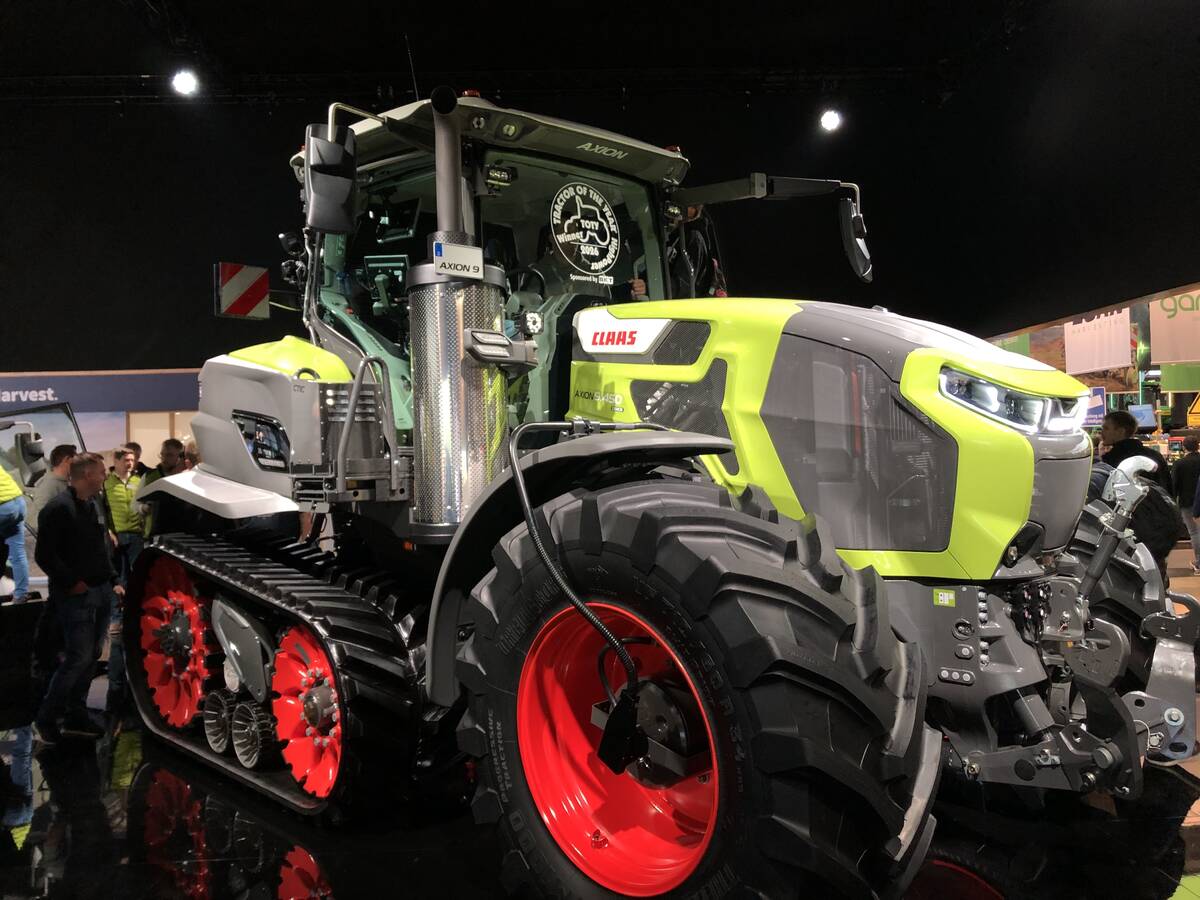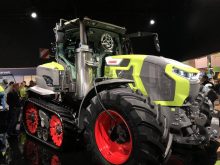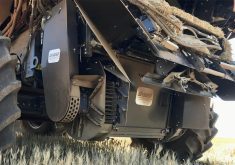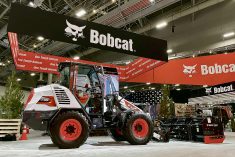Glacier FarmMedia – Farm equipment dealer Guy Deroche was pleasantly surprised about parts orders this fall when delivery was better than expected.
Supply chain disruptions were a hallmark of the year, forcing producers and agri-businesses to scramble for inputs, for equipment components, for livestock ear tags and a long list of consumer products.
There were few big issues for the machinery parts desk, but the same could not be said of new equipment.
Read Also

VIDEO: Claas Axion 9 tractors showcase comfort features
German equipment manufacturer Claas showcased its new Axion 9 tractor series, including farmer-focused cab features, at the Agritechnica 2025 machinery show in November.
Like most ag machinery dealers, Deroche is having trouble getting new equipment on the lot at Notre Dame Motors, a farm equipment dealer in southern Manitoba. He links that to manufacturers’ issues with sourcing components, noting some orders are still a year to a year and a half out.
“Some of [the producers] are just waiting, and some of the equipment we can’t even get prices on them, so they’re saying, ‘Well, we’ll just put it on the back burner and look at it in three months or six months or something’,” Deroche said.
[RELATED] The buyers are willing but the equipment supply chain is weak
New farm equipment inventory levels were already well below five-year trends in September 2021, according to an outlook published by Farm Credit Canada at that time. The lender put new tractor inventory at 42 per cent below the norm, while supply of new combines was 47 per cent below the five-year trend.
It projected that inventory would remain tight through 2022. Farmer demand was expected to further reduce inventory and increase prices.
Nothing has changed since that projection. According to FCC’s 2023 outlook, published earlier this month, a tight inventory may be the new norm. Inventories will remain below pre-pandemic levels, the lender said, and “could remain tight beyond 2024.”
That’s cause for concern, said Bill Campbell, president of president of Keystone Agricultural Producers, the province’s main farm group. He has heard that the most desirable air seeders and other equipment, or certain equipment features, might not be available for 2023.
“There’s even a question of would harvest equipment be available for 2023.” said Campbell. “There will be some equipment available, but will it be what you want and [what] fits your needs?”
Recipe for a shortage
“We’ve all experienced delays — it doesn’t matter what brand — over the last couple of years. I would say what we’re getting and when we get it is more formalized than it used to be… they give us lead times and then we have to work with those.”
The company has implemented an allocation system for limited products, with a set number of units available per dealer.
Reasons for the delays are more complicated than just manufacturers struggling for components, Wood added. New machinery has been absorbed by the U.S. market, which has been buoyed by higher farm income from higher grain prices.
According to FCC’s outlook last September, Canadian sales of new farm equipment increased 33.6 per cent in the first seven months of 2021. That broke down to a 62.8 per cent jump in the sale of four wheel drive tractors. Purchases of tractors with 100 horsepower or more had risen 46.8 per cent and combine purchases rose by about a third.
Supplier issues are not the only challenge plaguing manufacturers.
“I think the general impression out there is that they’re short of microchips or they’re short of wire harnesses or hydraulic pumps, things like that, and in a lot of cases, they’re short of labour,” Wood said.
The disruptions led manufacturers to shift away from the “just in time” supply model, said Larry Hertz, vice-president of the North American Equipment Dealers Association in Canada.
For years, that model kept manufacturing and consumer costs down for a wide range of industries, not just the machinery sector, but it was also vulnerable to supply disruptions that came with a global pandemic, he said.
“I think a lot of companies are moving in the direction of their own manufacturing of parts or warehousing more parts so that they can keep their production lines moving,” Hertz said.
Trickle down
“There had become an excess of good used equipment on dealers’ lots and because farmers can’t buy new and dealers can’t get new, that good used equipment tended to be worth more,” Hertz said.
Wood pointed to the price producers were willing to pay for new equipment, if they could get it, as well as impacts from the shifting Canadian dollar value. It all adds to the appeal of a late-model used unit.
Used prices have increased, and so has demand, said Sheri Siebert, manager of Combine World in Elstow, Sask.
The company specializes in parts and equipment reconditioning and sale, and has done brisk trade this year. MacDon headers in particular have been a hot commodity.
“New MacDon headers that farmers had pre-ordered didn’t show up in time for the harvest season,” Siebert said.
In the meantime, however, many farmers had sold their existing headers, leading them to Combine World’s door. The company sold out of straight-cut and 16-foot pick up headers, Siebert said.
“Those were impossible for us to keep on hand. Normally we have one or two at all times and we had nothing. And yes, when we did get them, the price of them did go up.”
MacDon Industries did not respond to requests for comment.
Siebert also noted increases in the cost of steel and freight, which add pressure to the used equipment market.
Her company’s usually price-competitive practice of sourcing tires from China took a blow this year. Siebert said the company paid about $20,000 for a freight container to ship tires. The suppliers also instituted a new steel fee, she said.
“It’s been a little bit tough to navigate but it seems like it’s been a common denominator across the board, that everybody’s struggling. Everybody’s price is going up.”
Finance factors
That’s put more pressure on the used equipment and parts markets, Campbell noted. Some used equipment is already approaching prices that producers might ordinarily expect to pay for new, he said.
“When we see the shortage of equipment and see the price of equipment, the repayment terms are significant, and when we have enhanced interest payment portions, it really enters into that part.”
Hertz said those interest rates, compounded by the price of new equipment, could slow sales, although FCC has projected strong demand into next year.
“In general, new equipment has gone up in price because of the supply chain challenges, inflation, shortage of steel, shortage of every component, really, that goes into manufacturing, and then if you compound that with higher interest rates, it’s definitely going to have an effect,” Hertz said.
FCC expects high commodity prices will bolster farm purchases in the short term, despite higher interest and a lower U.S. exchange rate.
The lender’s 2023 machinery market outlook indicates a “recovery in deliveries of new equipment as supply chains slowly recover,” although inventories are projected to remain tight.
“We also expect the used equipment market to stay robust for most of 2023 and into 2024,” the outlook states. “Prices in the used equipment market may moderate as delivery of new equipment results in additional trades and inventory of new equipment slowly recovers.”
Both Wood and Hertz said they expect tight supplies to continue over the next year.
– This article was originally published at the Manitoba Co-operator.
















